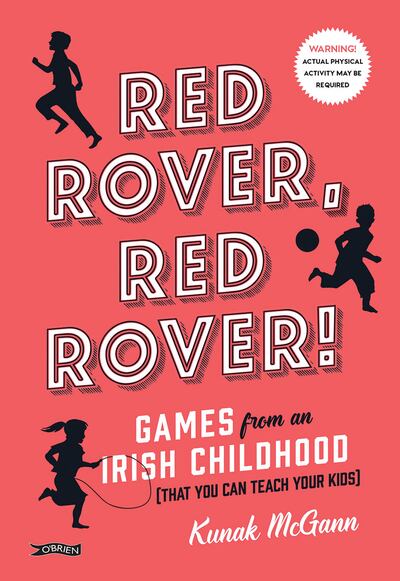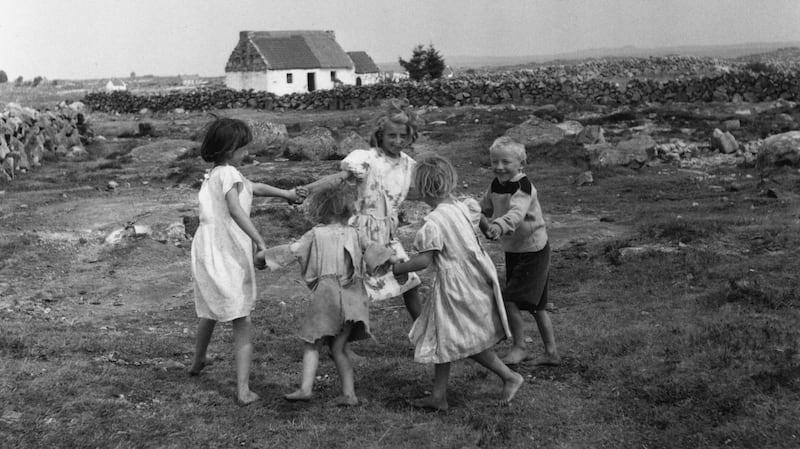
I was an ’80s child through and through. I cried inconsolably at the cinema when ET had to go back home. I owned milk-washed jeans and boot-runners, and really, really wanted a puffball skirt. I was going to marry Mags from A-ha (yes, that’s right, the moody-looking keyboard player). And I spent a good portion of my childhood playing Grandmother’s Footsteps, Skipping, Red Rover and Tip the Can. And have a nice little scar on my right shin to show for it.
I grew up on an estate of about 40 houses, and with the larger families of the ’80s, there was nearly always someone hanging around looking for a game of something. But while researching and writing my book, Red Rover, Red Rover!, I was surprised to discover just how many different childhood games we played – of the nearly 80 games featured in the book, our motley crew played all but three of them (Dodgeball, Capture the Flag and Duck, Duck, Goose – which, by all accounts, were big favourites with the ’90s kids coming up behind us).
Our choice of game usually depended on how many friends we could muster up on any given day. If there was just the two of us, the highly competitive Kerbs was always a good go-to game, or Hopscotch, Sevens, Marbles, Conkers or even Slaps, for those brave of heart and strong of stomach.

Coax another friend out to play and we could choose from Skipping, Elastics (one of my own personal favourites) and Piggy in the Middle. Add more kids to the mix and it was Tip the Can, Donkey, Off-the-Ground Tig and What Time is it, Mr Wolf? And then, on those legendary days, when everyone seemed to be out on the street and at a loose end, there was the full-on, high-volume chaos of Red Rover, Rounders, Bulldog or Relievo. And tales of those days went down in neighbourhood legend – the hard-fought victories, the mortifying defeats, and the unforeseen injuries.
What we weren’t remotely conscious of, growing up, was that as well as giving us many oh-so-fond memories (and the odd scar or two), these simple, old-school games brought us benefits that have become parenting and child psychology buzz words in recent years: physical fitness, motor skills, social interaction with peers, risk management, compassion, self-control and boundaries. With more awareness of childhood obesity, online and offline bullying, and mental health issues, these are things that parents of this generation of children are increasingly concerned about.
And yet, we are unwittingly encouraging our children away from playing on their own out on the street or in fields and towards filling their days with more structured activities like sports training and after-school classes. While teachers and trainers may be playing these more traditional games with kids in school or scouts or football practice, most children aren’t getting enough practice at instigating them and playing them on their own, without adult supervision.

These games are easy to set up and very inexpensive (which was vital during those cash-strapped early 1980s): they require little other than a few companions and maybe a ball or a piece of rope or elastic. But their simplicity is misleading. They promote physical fitness – a study of Glasgow schools has found that children encouraged to play these games out in the fresh air get substantially more physical activity than those having indoor PE classes.
These games require a range of motor skills – and the first ever national study of children's exercise in Ireland, undertaken by DCU and the GAA (Moving Well – Being Well), finds that today's 12-year-olds are struggling with skills that used to be normal for six-year-olds, like two-handed catching, overhand throws and hitting a ball with a bat.
These games cultivate social skills, navigating relationships with other children without being overseen by adults. They require a level of self-control and cultivate compassion – schools in the Bronx have found a dramatic drop in bullying when these games are adopted in the schoolyard. And they allow children to assess risk with relatively minor consequences, which will help them navigate potentially more dangerous activities later on in life, like driving their first car.
With our rose-tinted glasses well and truly welded on, we tend to think that kids these days are somehow different than we were. But they’re really not. Most of us watched our fair share of telly back when we were growing up (am I the only one who can remember emerging into blinding daylight early on Saturday afternoons, only when Sports Stadium heralded the end of a morning of kids’ programmes?).
But back then, there was no such thing as 24-hour children’s TV, no such thing as entertainment on demand with the flicking on of a tablet or phone. Kids nowadays have a lot more to occupy them than we did, and they spend a lot less time being bored than we did (if I had an old Irish pound for every time my nine-year-old self told my beleaguered mother I was bored, I could have bought a Cabbage Patch Kid and a Care Bear and still had enough money left over to eat my weight in penny sweets). But kids are still just kids – they feel the same thrill that we did when being chased in Tig or when evading capture in Bulldog. They get just as much fun from sneaking up behind Mr Wolf, and are just as triumphant when they tip the can and save all.
We have all watched, at times with fondness and at others with growing alarm, the returning fashion trends of the 80s (denim jackets I can appreciate, but shoulder pads? Really?) Now surely it's time for the comeback of Hopscotch, Elastics and Red Rover – ditching the tablets, getting outside and teaching our children a few of our own favourites, and then leaving them to it. They'll thank you for it – maybe not right away (they are kids, after all), but some day.
Kunak McGann is the author of Red Rover, Red Rover! Games from an Irish Childhood (That You Can Teach Your Kids) (O'Brien Press, €14.99)
















